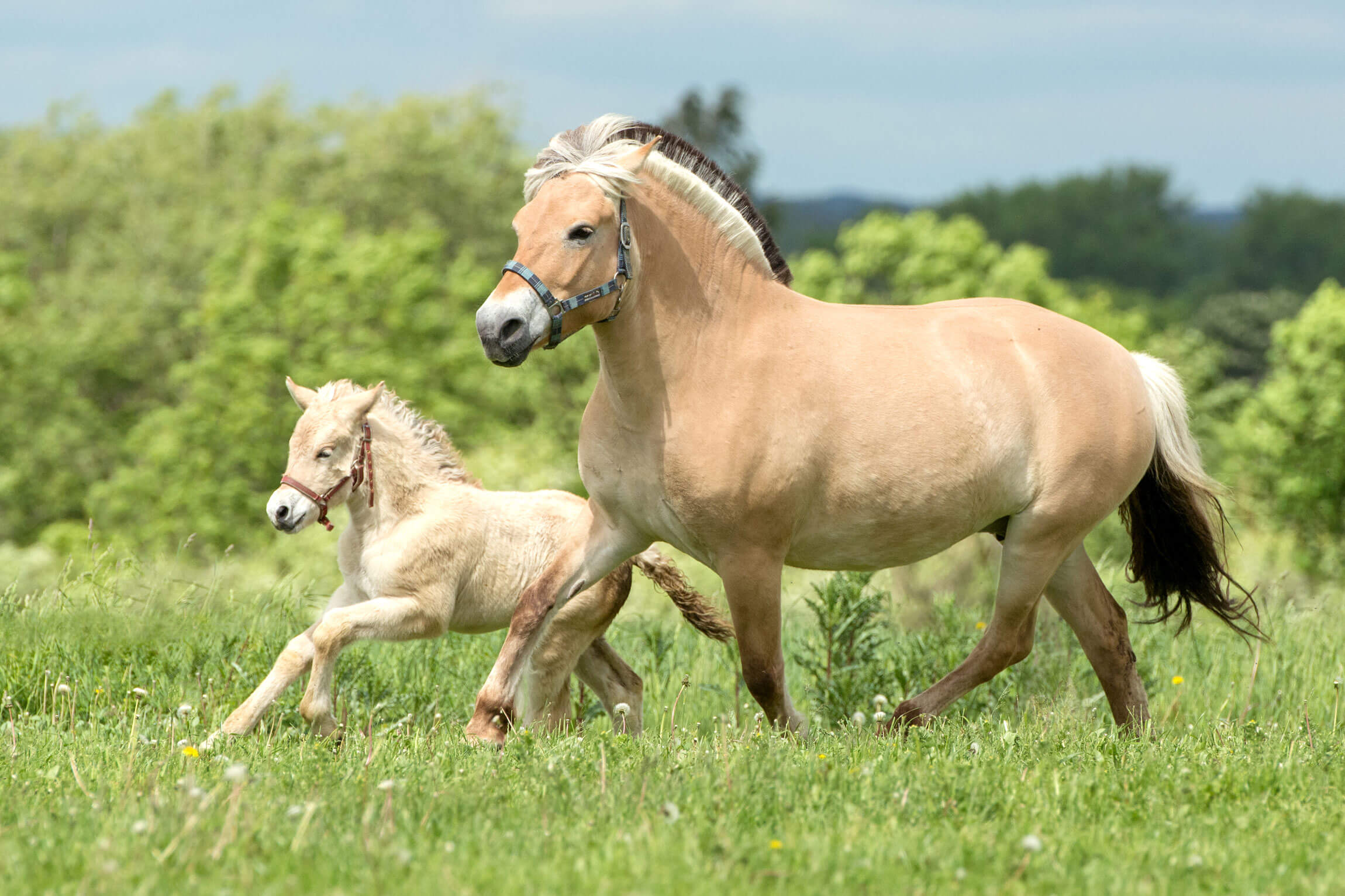You can often recognize a Norwegian by their typical color and mane. The duns come in different tones, with more or less pronounced stripes on the legs and on the back and the mane can also be monochrome or two-tone. But often the mane is black and white and is cut as a conspicuous standing mane. The strong ponies are easily recognizable due to their very uniform appearance.
Origin and History

The Norwegian fjord horses, as their name suggests, come from Norway. The equally used name “Fjord horse” indicates this origin. Other names are “Norwegian” or “Fjord”. The rocky landscape of Norway is known for its fjords, which are deep cuts into the country. The fjord horse itself probably comes from the horses of the Vikings and is still very original. It bears a clear resemblance to the Przewalski horses of Mongolia and, like them, often has so-called zebra crossings on the legs and an eel line. This is a dark line that runs across the spine. The genetic origin of the breed has not yet been deciphered, but it is certain that Norwegian Dolepferde was also crossed for a while. The cold-blooded horses should make the Norwegians bigger and more stable, but the crossbreeds have not proven themselves. Fjord horses have been bred without foreign blood since the end of the 19th century. The breeding base is quite narrow with three main lines, which is why the appearance of the Norwegians is very homogeneous.
The Norwegian was not only used in agriculture in his homeland but also as a packhorse for loads. The rather barren and rocky landscape accordingly produced a robust and frugal horse that is considered sure-footed. Like all workhorses, the Norwegians have been used less and less since the middle of the 20th century – the population declined.
In Germany, fjord horses were in great demand in the first few years after the Second World War: you needed easy-to-feed workhorses, as the number of your own horses was decimated by the war. During this time, fjord horses were crossed with other breeds and some of the crossings were registered as fjord horses. Through the import of pure-bred horses, these have now been largely displaced from the stud books. But also in Germany, the workhorses were needed less and less and only the increasing number of recreational riders rediscovered the Norwegian. Crossbreeds with other breeds to make the Norwegian lighter and more athletic were often unsuccessful. In the meantime, however, a sporty leisure horse has been created in pure breeding.
Interior
The fjord horse is robust and durable. It has a balanced mind, so it is not only suitable as a riding horse for adults, but also for children. The fjord horse is considered fearless and fearless.
Exterior
The fjord horse is a large pony, up to 150 centimeters in size. It is strong, often almost baroque. The large head sits on a strong, not too long neck, the back is rather long and stable. The Fjords, as it is affectionately known, have short, strong legs. You can often see zebra crossings on them. The distinctive eel line can be seen on the back.
Fjord horses are duns that can be of different lightness or tint. A distinction is made between brown falcons, gray falcons, red falcons, light falcons, and yellow falcons. The mane is usually two-tone – the dark eel line, which you can see on the back, runs from the mane to the tail. The black and white mane is often cut as a standing mane, where the black part is left longer on the inside than the white part. Many a Norwegian even adorn elaborate, creative hairstyles with different points in their two-tone mane.
Suitability / Use
The fjord horse is a popular leisure horse. It is robust and sure-footed and, due to its size, is suitable for both children and adults. They like to show their skills in western tournaments and driving tests. Most often you see them as cross-country horses for recreational riders. The Norwegian is less suitable for the classic tournament disciplines of dressage and jumping in higher classes. In return, he excels at therapeutic riding, where his friendly character benefits him.
Attitude

The Norwegian is a sturdy pony who does not like keeping in overly rich pastures. His origins made him frugal, he doesn’t need too much high-energy feed – that makes him sick just like other robust pony breeds. If the keeping conditions are right, when exercise and social contact are assured, then keeping the Norwegian is rather uncomplicated.
